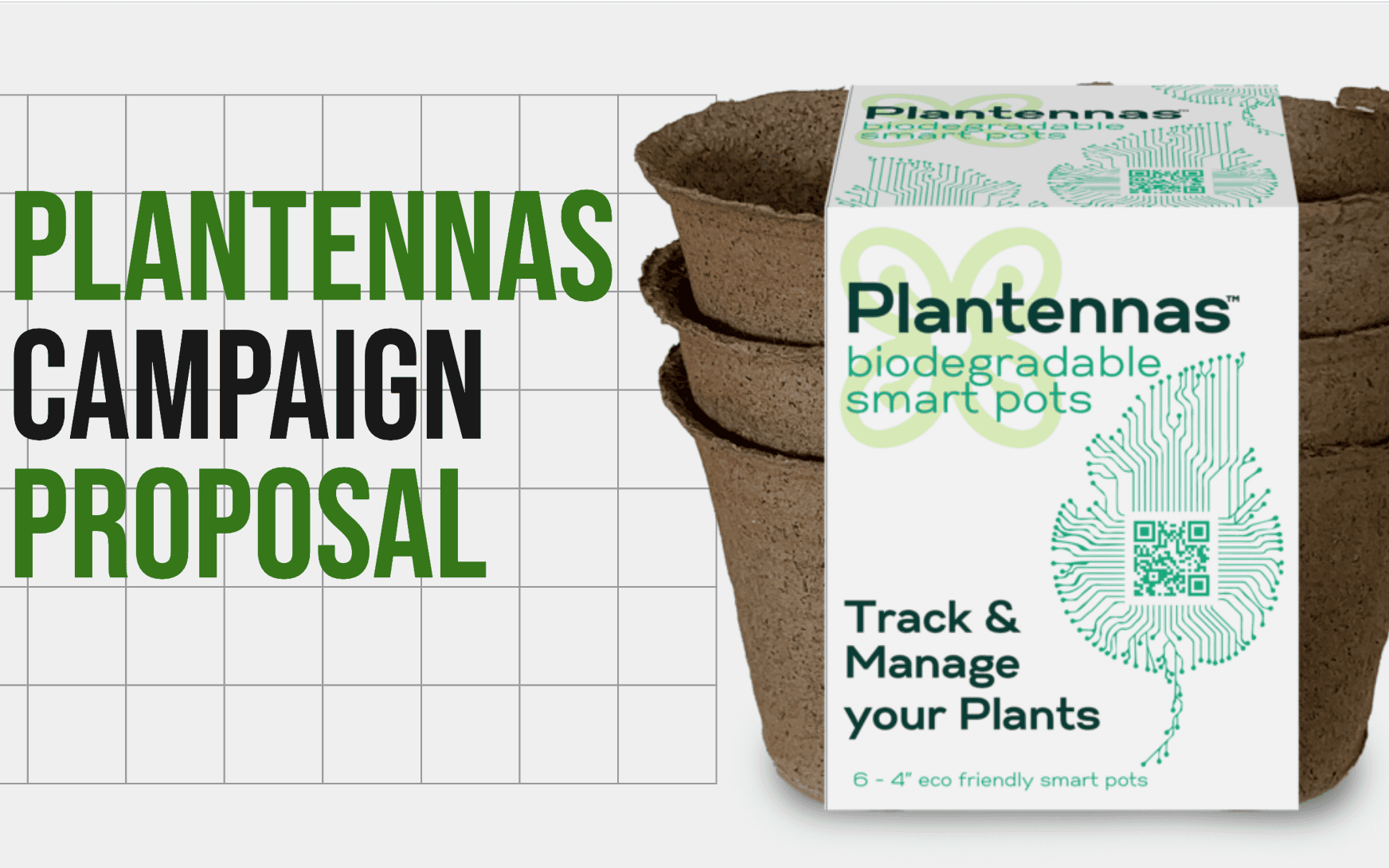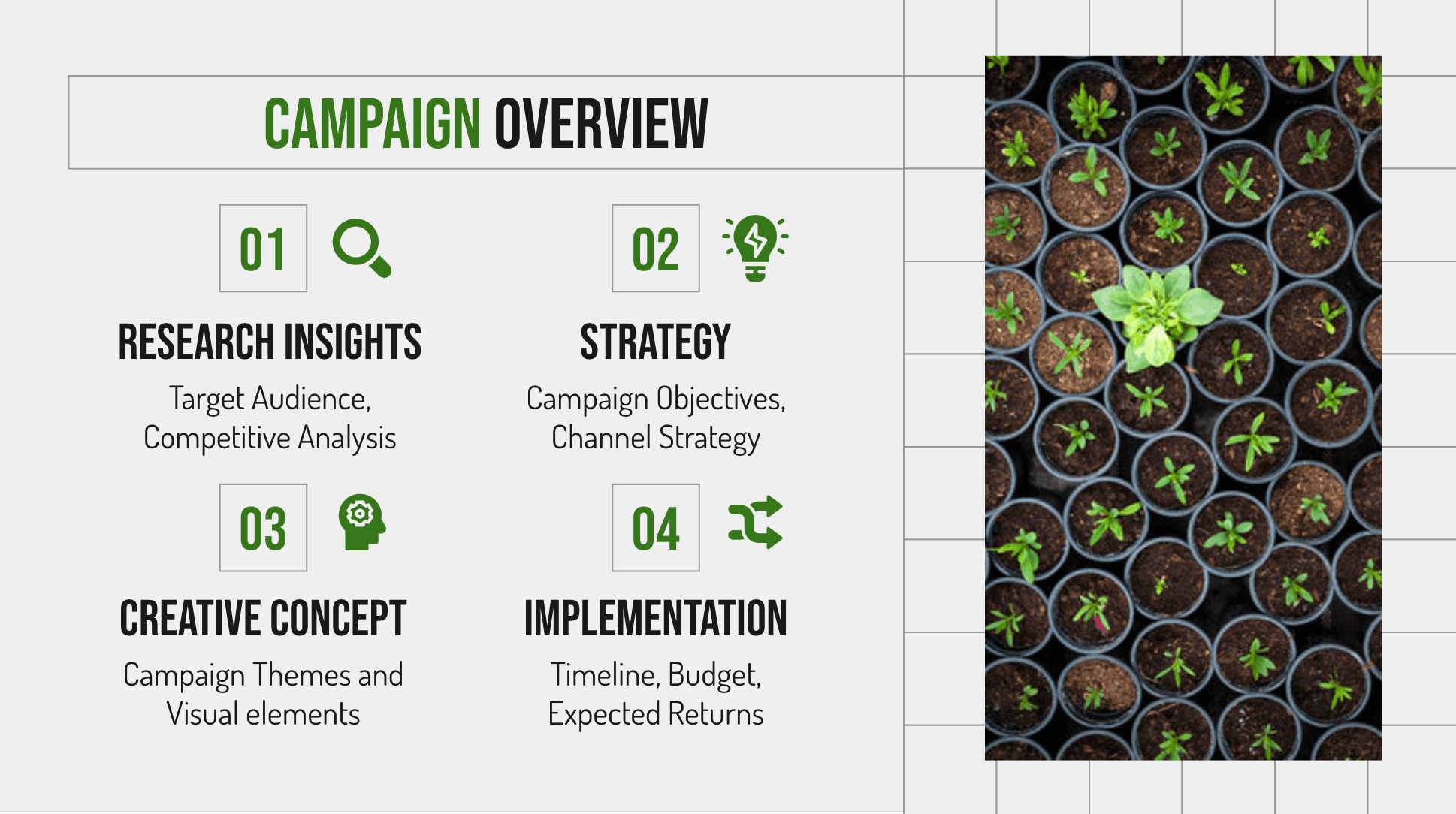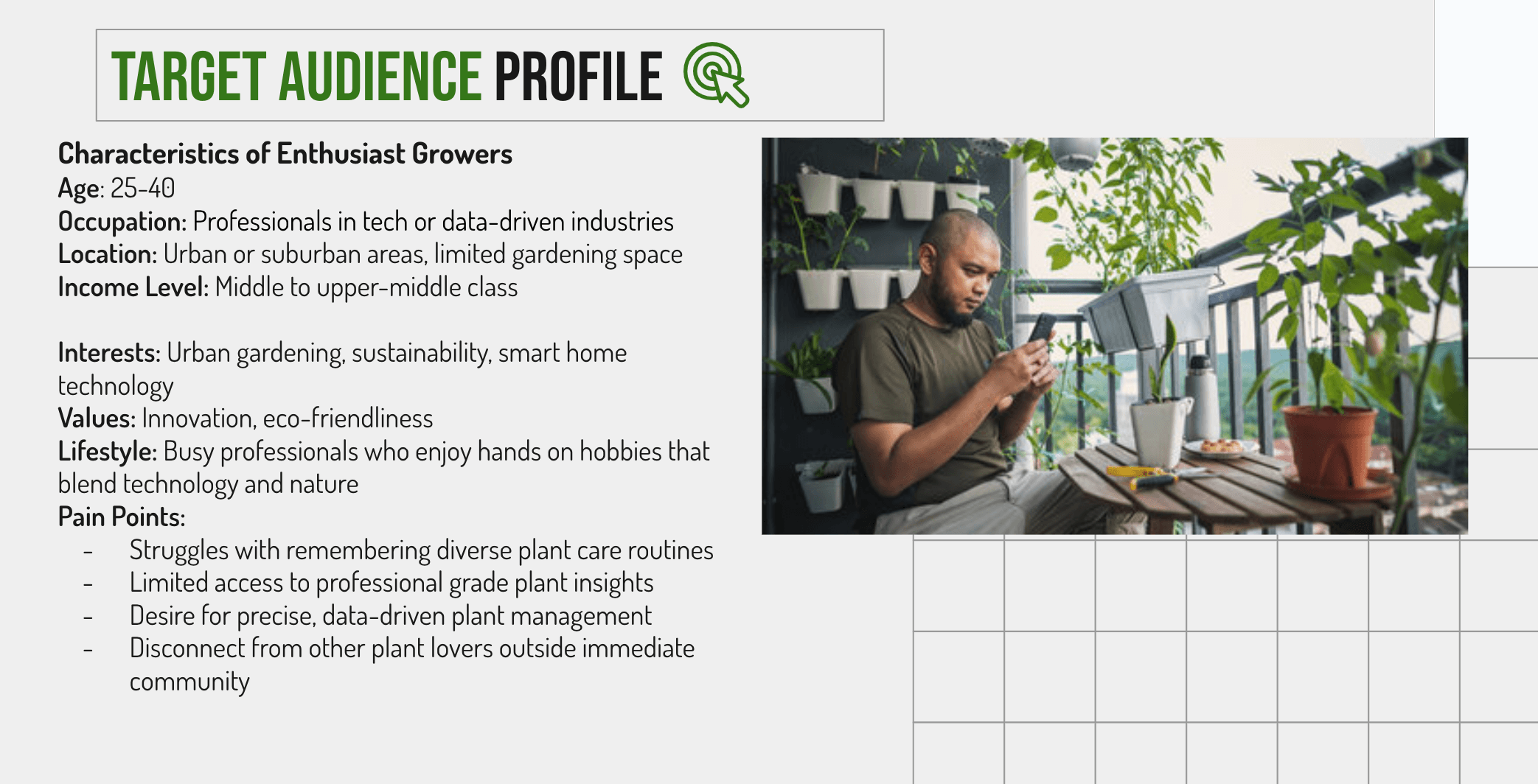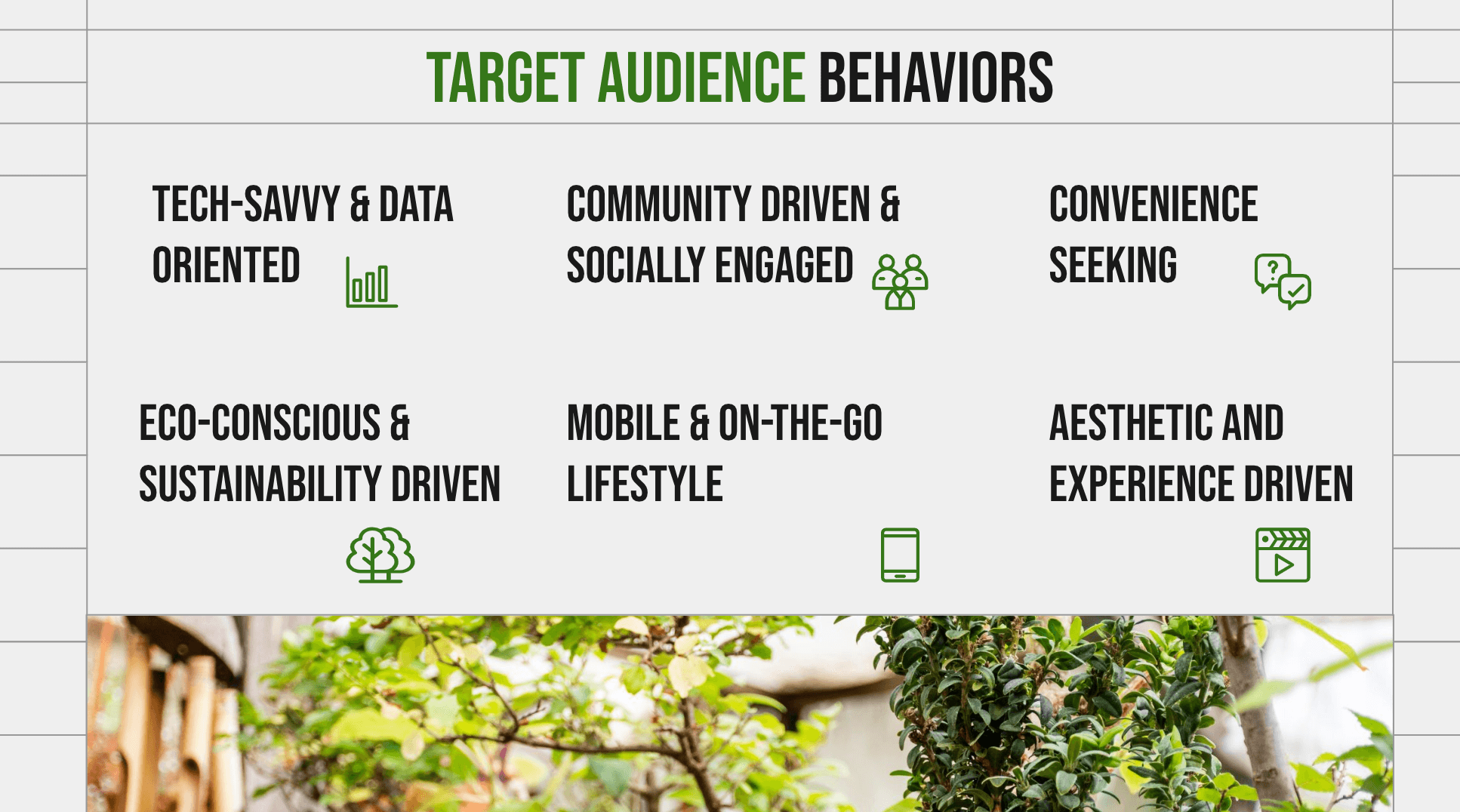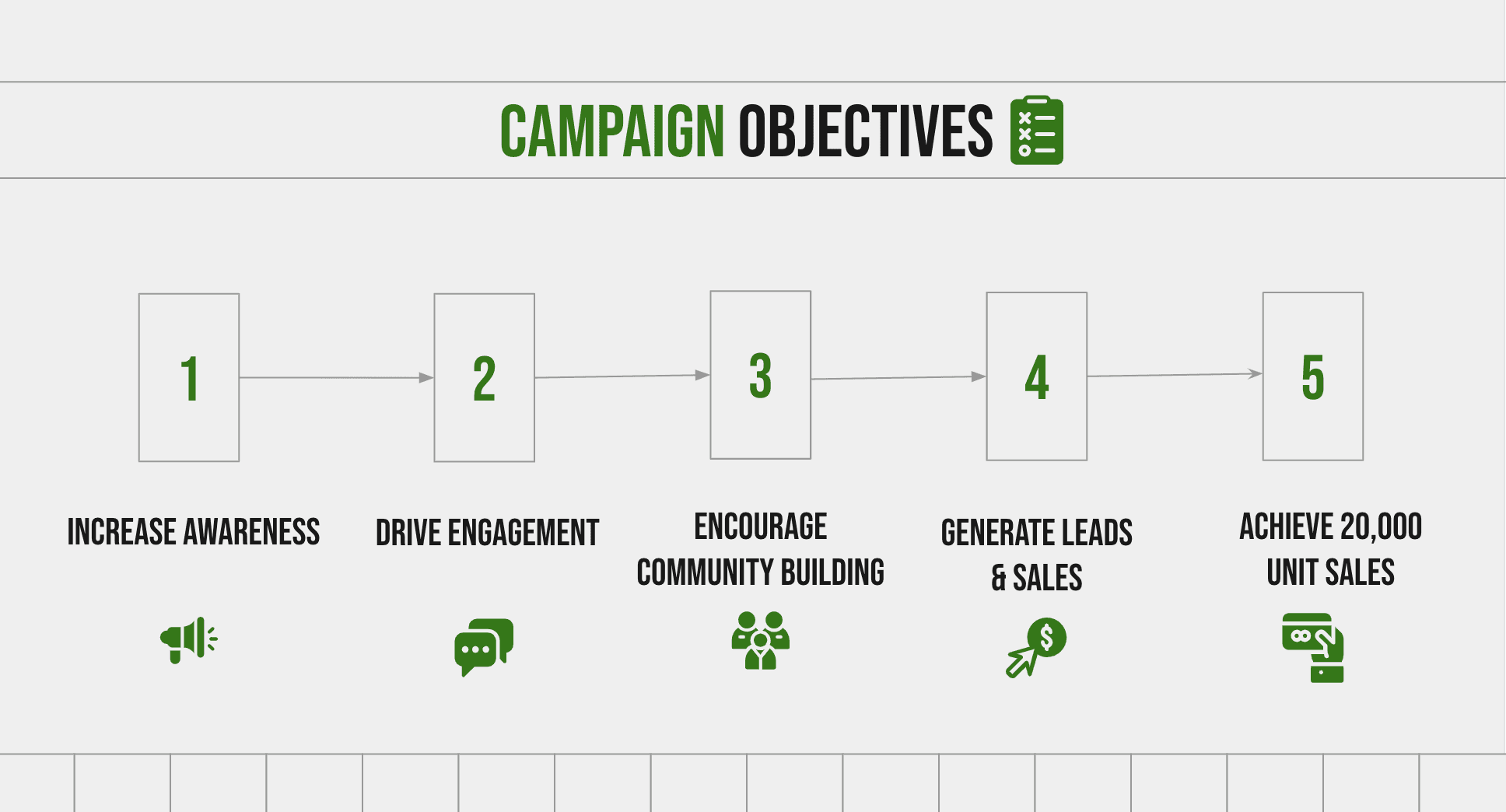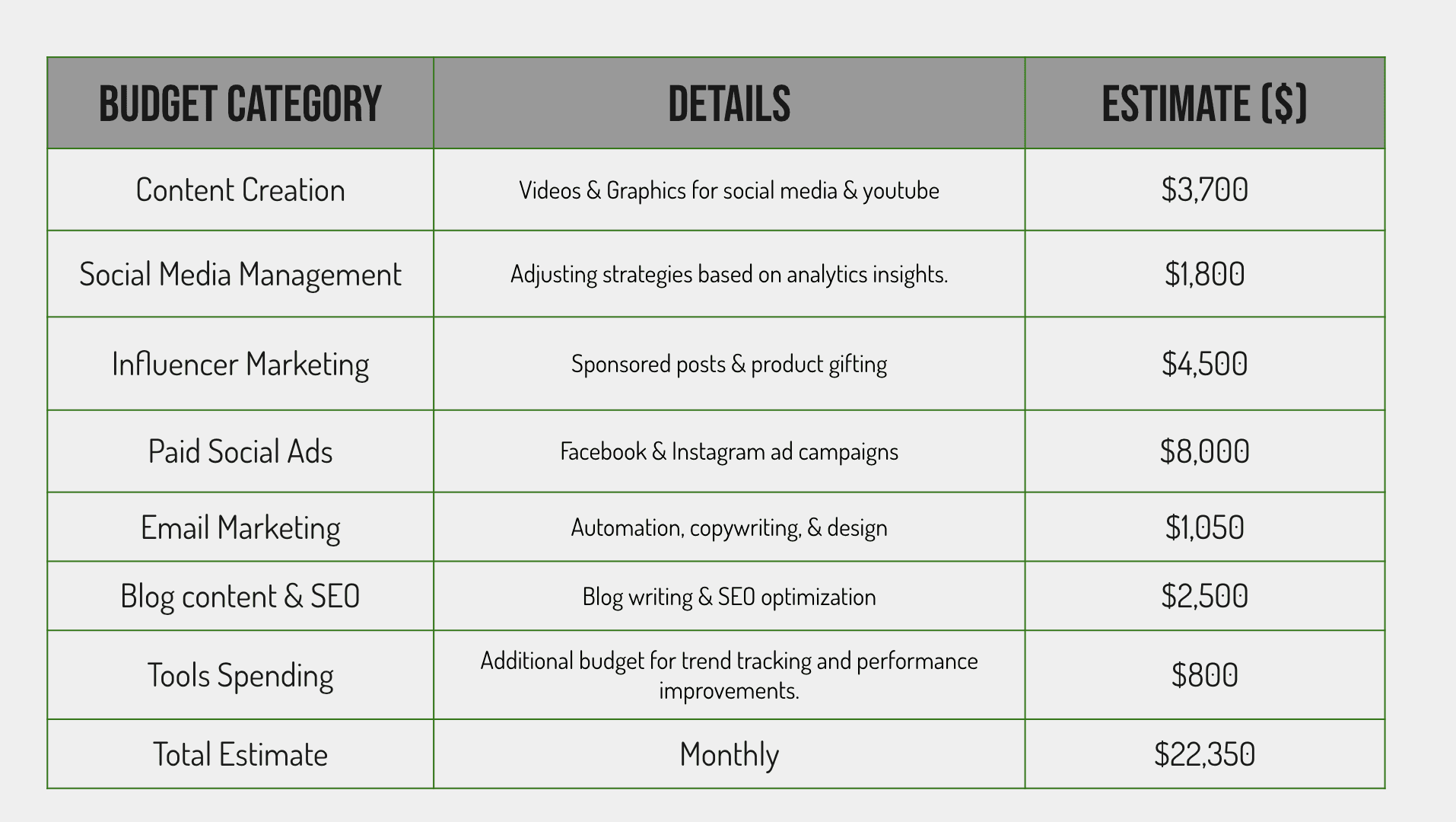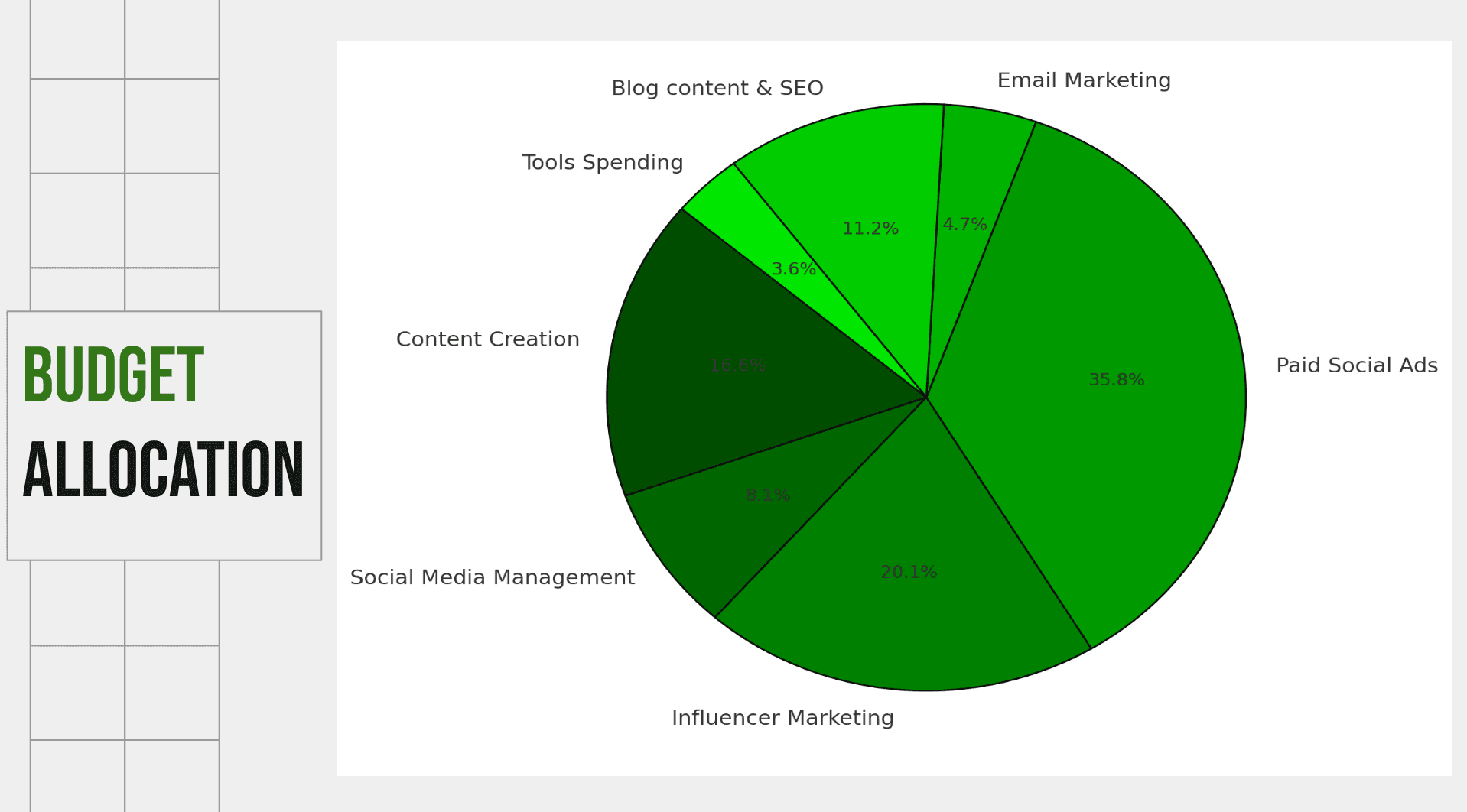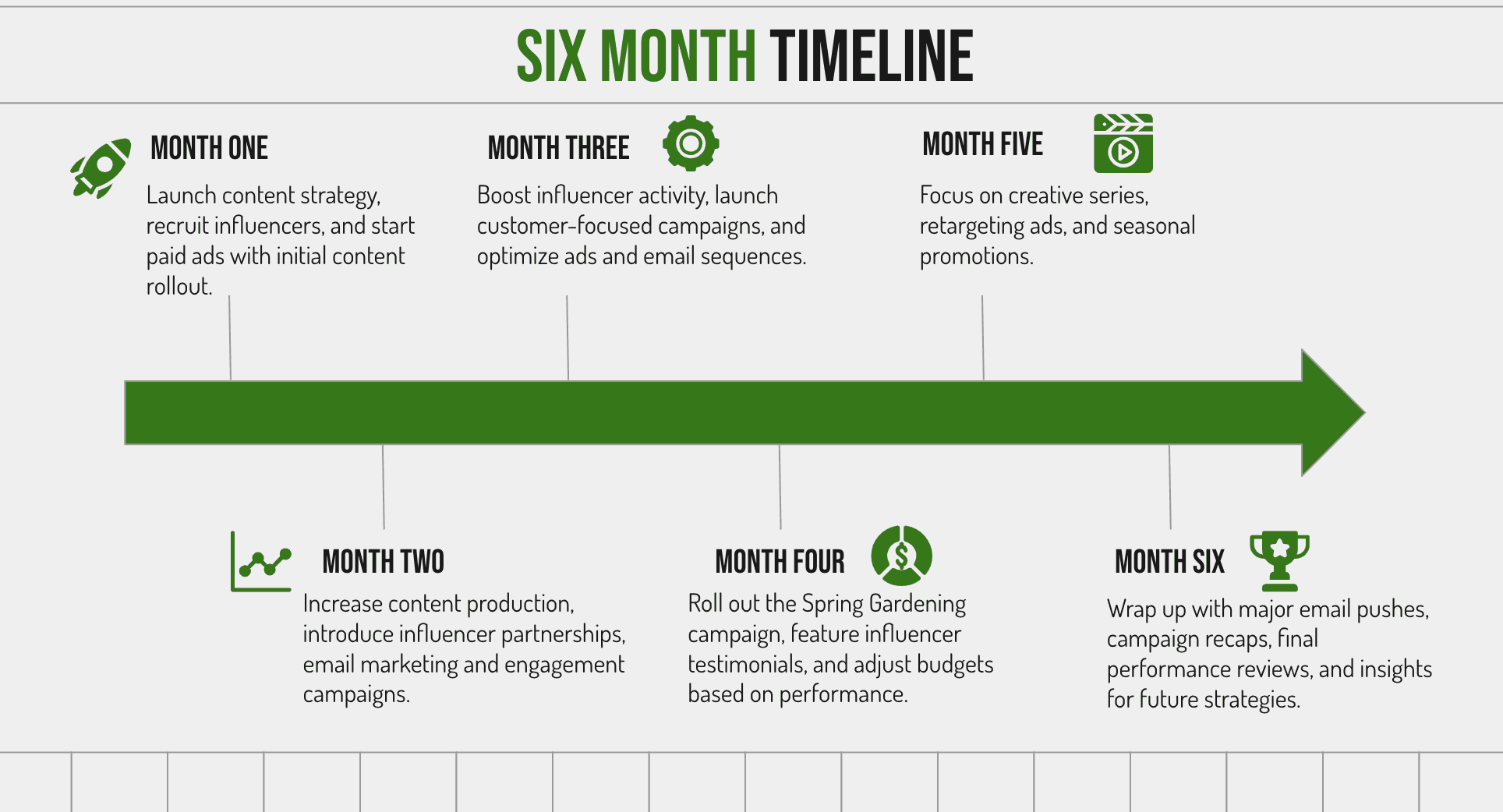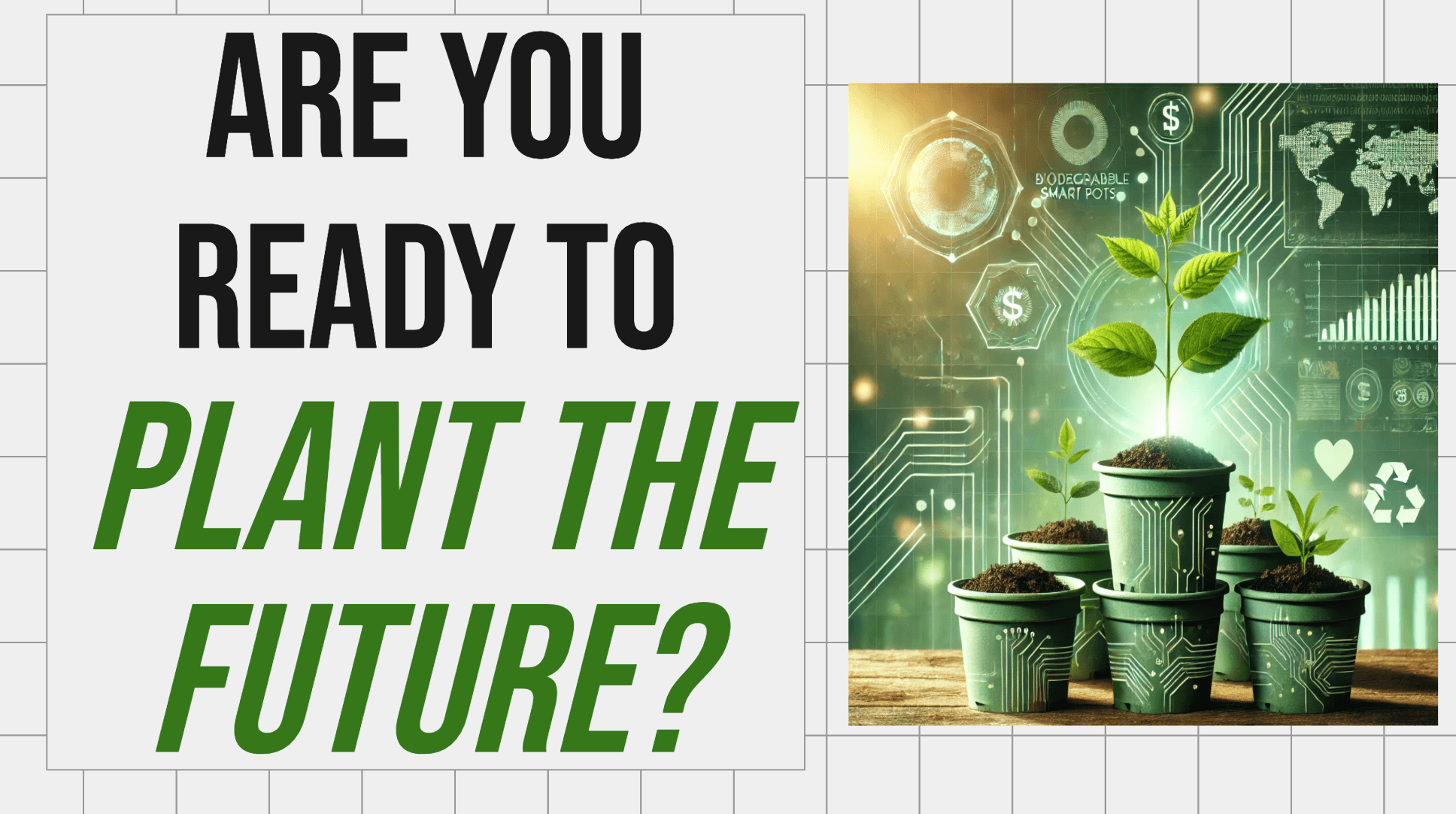Campaign Overview and Objectives
The Plantennas campaign is a six-month marketing initiative to launch biodegradable RFID-enabled plant pots for home gardeners and professional growers. It aims to combine technology and nature, generating leads and driving 20,000 unit sales while increasing brand awareness on digital platforms. The campaign focuses on engaging tech-savvy, sustainability-minded individuals through influencer partnerships, targeted ads, email marketing, blog content, and social media storytelling, positioning Plantennas as the leading solution for modern gardening.
Target Audience and Buyer Personas
The target audience for Plantennas includes tech-savvy urban professionals who are passionate about gardening but struggle to manage the needs of their plants. Living in small spaces, they value innovation, sustainability, and efficiency in their hobbies. Anthony Nguyen is a 34-year-old software engineer who enjoys growing rare plants on his apartment balcony but often feels overwhelmed remembering plant care routines. Anthony wants to apply the same data-driven tools from his professional life to his garden. This audience desires a more innovative, connected way to garden, and Plantennas delivers just that.
Channel Strategy and Justification
The Plantennas campaign will use a multi-channel digital strategy focused on social media, influencer marketing, email, and blog content. Social media platforms like Instagram and Facebook are ideal for showing the product's visual appeal while encouraging community interaction. YouTube and influencer partnerships will act as educational tools while providing credibility through long-form content and product demonstrations. Email marketing will be used to boost leads, share personalized care tips, and promote loyalty through exclusive content. Blog content optimized for SEO will attract organic traffic and position Plantennas as an expert in smart gardening. These channels match the habits of tech-savvy, urban consumers who use digital platforms to learn, connect, and discover new products.
Setting a Budget and Budget Management
To set the budget for the Plantennas campaign, we analyzed campaign goals, audience behavior, and expected returns. The six-month budget is $134,100, with a monthly estimate of $22,350. Spending is distributed across key areas: $8,000 for paid ads, $4,500 for influencer marketing, $3,700 for content creation, and $2,500 for blog content and SEO. Additional funds support email marketing ($1,050), social media management ($1,800), and tools for tracking and optimization ($800). A portion of the budget allows testing and adjusting tactics to boost ROI. The campaign is expected to generate a 198.3% ROI, supporting a goal of 20,000 unit sales.
$22,350
Monthly Estimate
$134,100
Six-Month Estimate
198.3%
ROI
